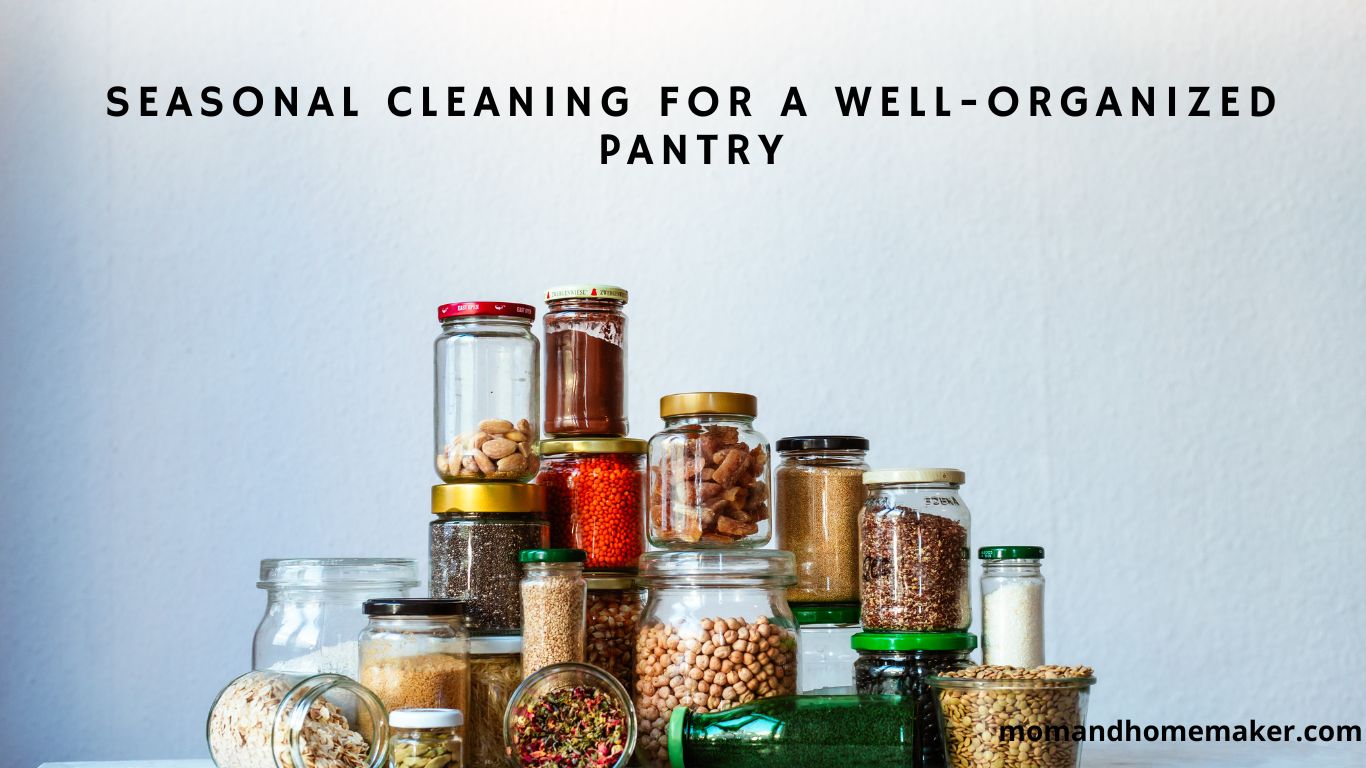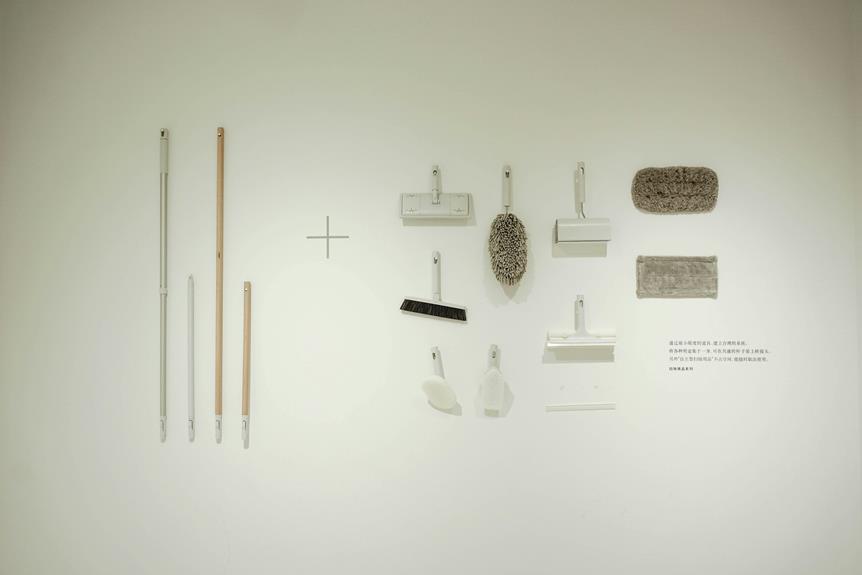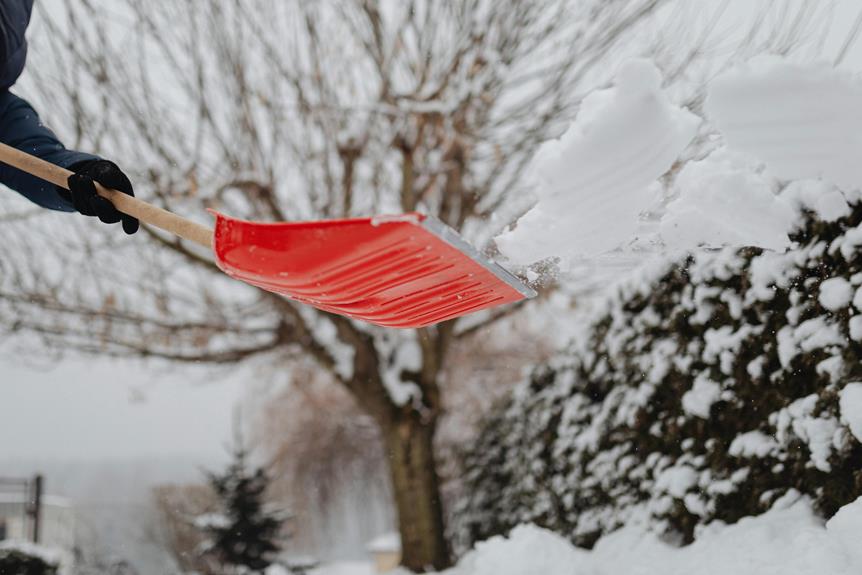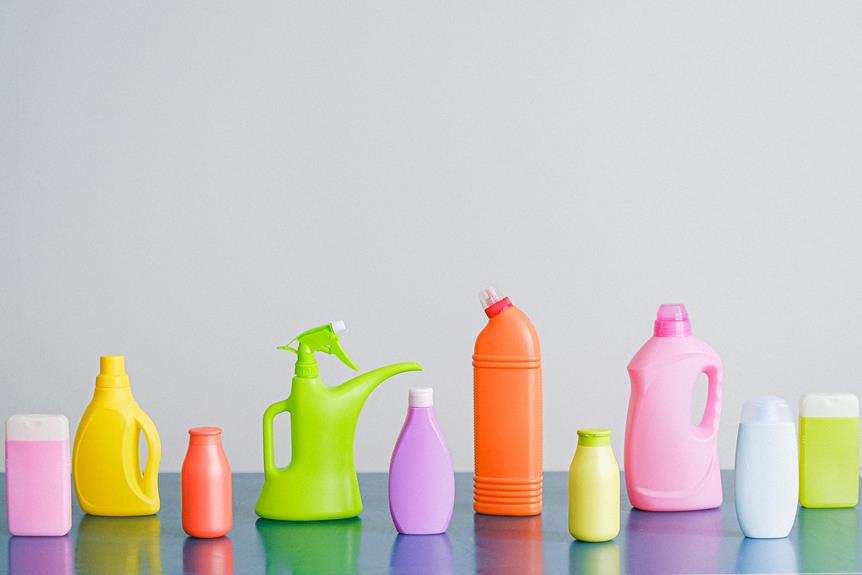Keeping a well-organized pantry is essential for maintaining an efficient and functional kitchen.
Seasonal cleaning provides an opportunity to declutter, reorganize, and revitalize the pantry space, ensuring that it remains tidy and well-maintained throughout the year.
With a strategic approach to seasonal cleaning, individuals can optimize their pantry storage, minimize food waste, and create a welcoming environment that inspires culinary creativity.
Assessing Your Pantry
When assessing your pantry, start by carefully inspecting and evaluating its contents. This is an important step in decluttering and will help you identify your storage needs.
Take note of items that are nearing their expiration date or are no longer used. This will help you create a shopping list of essential items that need to be replenished.
Once you’ve identified items that need to go, optimize your shelf space by using storage containers or bins to keep similar items together and maximize space. This will make your pantry look tidy and make it easier to find what you need.
Also, consider the placement of items and keep frequently used ones within easy reach. Group them for convenience when preparing meals.
Emptying and Cleaning the Shelves
Start by taking everything off the shelves to prepare for a thorough cleaning. This is an important step in keeping your pantry organized and clean. As you go through each shelf, you may notice spills, crumbs, or expired items that have been overlooked. It’s time to give your shelves a deep clean.
To start decluttering, get rid of any expired or spoiled food items. This not only creates more space but also ensures you have fresh and safe ingredients for your meals.
As you remove each item, check its condition and usability. If you have unopened packages that you no longer need, consider donating them to a local food bank or a neighbor in need.
Once the shelves are empty, it’s time to clean them properly. Use warm soapy water and a clean cloth to wipe down all surfaces, removing any stains or sticky residue. Pay close attention to the corners and crevices where dirt can build up. After cleaning, make sure the shelves are completely dry before restocking.
To maintain an organized pantry, it’s important to use proper storage techniques. Categorize your items and use clear containers or bins to keep everything visible and easily accessible. Label each container to make it easier to find what you need. Regularly check the cleanliness of your pantry and declutter as needed.
Sorting and Categorizing Food Items
When you empty and clean the shelves, the next step in organizing your pantry is to sort and categorize your food items. This is an important step because it helps you easily find and access the items you need, creating a sense of order in your pantry.
Start by storing your fruits in a designated area. Arrange them in a way that allows you to see and reach them easily. This not only keeps your fruits fresh but also adds a pop of color to your pantry.
Focus on organizing your grains. Categorize them by type, such as rice, pasta, and quinoa. Use clear containers or labeled jars to keep them visible and prevent them from getting lost in the back of the pantry.
When it comes to arranging canned goods, group them by category, such as vegetables, soups, and sauces. This way, you can quickly find what you need when preparing meals.
Don’t forget to sort your condiments. Group them and consider using a turntable or shelf organizer to maximize space and make them easy to access.
Lastly, categorize your baking supplies. Separate them into dry ingredients like flour and sugar, and wet ingredients like oils and extracts. This will make baking a breeze and help you avoid wasting time searching for the right ingredients.
Checking Expiration Dates
To keep your pantry food safe and high quality, it’s important to regularly check expiration dates. Following these guidelines is crucial for maintaining food safety. Pay attention to the ‘best by’ or ‘use by’ dates, as they indicate the recommended time frame for consuming the product at its peak quality.
In addition to expiration dates, there are a few food safety tips to keep in mind. Familiarize yourself with the signs of spoilage, such as unusual odors, changes in texture, or mold growth. If you notice any of these signs, it’s best to discard the item to avoid any health risks.
Understanding the shelf life of different food products is also important. While some items may last longer than their expiration date, others may spoil sooner. Make sure to learn about proper storage methods to extend the life of your pantry items.
When it comes to storing canned goods, there are a few guidelines to follow. First, check that the cans aren’t dented, bulging, or leaking, as these could be signs of potential spoilage. Store canned goods in a cool, dry place away from direct sunlight.
Avoid placing them near heat sources, as it can affect their quality. By taking these precautions and regularly checking expiration dates, you can maintain a well-organized and safe pantry.
Creating a Meal Planning System
Now that you have checked the expiration dates to ensure the safety and freshness of your pantry items, it’s time to create an efficient and organized meal-planning system. Meal planning can save you time, money, and stress, while also helping you make healthier food choices.
By dedicating a little time each week to plan your meals, you can streamline your grocery shopping, reduce food waste, and keep your kitchen inventory well-organized.
To create a meal planning system that works for you, follow these steps:
- Meal Prep: Set aside some time each week to prepare meals in advance. This can include chopping vegetables, marinating meat, or cooking a batch of grains. By doing this, you’ll have ingredients ready to use when it’s time to cook.
- Grocery Shopping: Make a list of the ingredients you need for your planned meals and stick to it when you go grocery shopping. This will help you avoid impulse purchases and ensure you have everything you need for the week ahead.
- Recipe Organization: Keep all your recipes in one central location, whether it’s a physical recipe binder or a digital folder. This will make it easier to find and reference recipes when you’re planning your meals.
- Kitchen Inventory: Regularly take stock of what you have in your pantry, refrigerator, and freezer. This will help you avoid buying duplicates and give you a clear idea of the ingredients you already have on hand.
- Time Management: Consider your schedule when planning your meals. Opt for quick and easy recipes on busy days and save more elaborate meals for when you have more time to cook.
Investing in Storage Containers
When it comes to organizing your pantry, storage containers can be a game-changer. They maximize organization and keep your ingredients fresh and easily accessible. Here are three options to help you customize, stay within your budget, and choose eco-friendly solutions:
- Customizing containers: Look for storage containers with customizable labels or labeling options. This makes it quick and efficient to identify and locate your pantry items. Clear containers are also a great option as they allow you to see what’s inside at a glance, making it easier to find what you need.
- Budget-friendly options: You don’t have to spend a fortune on storage containers. There are plenty of affordable options available, such as plastic bins or glass jars with airtight lids. These will keep your pantry items organized and fresh without breaking the bank.
- Eco-friendly storage solutions: Consider using storage containers made from sustainable materials like bamboo or recycled plastic. Not only will these help you organize your pantry, but they also contribute to a greener environment.
Investing in storage containers is especially beneficial for organizing baking supplies and storing bulk items. Separate containers for flour, sugar, and spices can keep them fresh and prevent cross-contamination. For bulk items like rice, pasta, or cereal, large, airtight containers will extend their shelf life and keep pantry pests away.
Utilizing Vertical Space
Maximize your pantry space by using vertical storage options. When organizing your pantry, it’s important to make the most of every inch of available space.
Hanging baskets are a great way to create extra storage for items like onions, garlic, or snacks. You can hang these baskets from the ceiling or attach them to the walls, effectively utilizing your vertical space.
Another option is door-mounted racks. These racks can easily be attached to the inside of your pantry door, providing additional storage for spices, condiments, or small bottles. They’re a convenient and space-saving solution that helps keep your pantry well-organized.
Stackable bins are also useful for utilizing vertical space. You can stack these bins on top of each other, making use of the vertical height of your pantry. They’re perfect for storing canned goods, pasta, or baking supplies.
Consider installing wall-mounted shelves in your pantry. These shelves allow you to store items such as cookbooks, jars, or small appliances, freeing up your pantry shelves. They also add a decorative touch to your space.
Lastly, a Lazy Susan is a great tool for your pantry. This rotating tray allows you to easily access items stored in the back of your pantry. It’s perfect for storing spices, oils, or other small items that tend to get lost in the depths of your pantry.
With these vertical storage options, you can make the most of your pantry space and keep it well-organized.
Organizing Spices and Seasonings
To organize your spices and seasonings efficiently, follow these three tips:
- Store herbs and spices properly: Keep them in airtight containers to maintain freshness. Air, light, and moisture can cause them to lose flavor and potency. Consider using small, tightly sealed glass jars or spice-specific containers.
- Use spice racks: Spice racks save space and make spices easily accessible. Choose a wall-mounted or carousel-style rack that suits your space. Arrange your spices in an organized manner for quick access.
- Organize spice jars: Group jars by type or usage. For example, group baking spices together and arrange them alphabetically. This makes finding spices easier while cooking or baking.
Label your spice containers to avoid confusion, and consider creating a spice inventory system to track your favorites. By following these tips, your pantry will become a well-organized and efficient space for all your cooking needs.
Designating Zones for Different Types of Food
To organize your pantry effectively, designate specific zones for different types of food. This helps create a well-organized pantry by grouping similar items, making it easy to find what you need and avoid buying duplicates.
Consider using clear containers for pantry items, as they allow you to see everything at a glance and keep your food fresh for longer. Accessibility is also important, so place frequently used items at eye level and reserve higher and lower shelves for less frequently used items.
When designing your pantry layout, consider the size and shape of your space. Customizing storage solutions like adjustable shelves and drawer organizers can help maximize every inch.
Labeling Containers and Shelves
Labeling containers and shelves in your pantry is important for maintaining an organized storage system. When you clearly label your containers, it becomes easier to find what you need when you need it. Here are three techniques to help you with container labeling and shelf organization in your pantry:
- Categorize your containers: Sort your pantry items into categories such as grains, spices, snacks, and baking supplies. Use clear labels or color-coded stickers to identify each category. This makes it easier to locate specific items and gives your pantry a visually appealing look.
- Create a pantry inventory: Keep track of the items in your pantry by creating an inventory list. Label your containers with the name of the item and the date of purchase. This helps you keep track of what you have and prevents food waste. It also makes it easier to plan your grocery shopping trips.
- Utilize storage solutions: Invest in stackable containers, shelf dividers, and storage bins. Label these containers and shelves with the specific type of food or item they hold. This maximizes the use of space in your pantry and makes it easier to maintain a clutter-free environment.
Using Clear Bins for Snacks and Small Items
Maintaining an organized pantry is made much easier by using clear bins for snacks and small items. Clear bins provide several benefits for snack organization and storage. They allow you to see the contents at a glance, eliminating the need to search through multiple containers. This saves you time and frustration, making your pantry experience more efficient.
Clear bins also come in various options, such as stackable or modular designs, allowing you to customize your pantry according to your needs. You can easily categorize snacks by type or size, making it simpler to find what you’re looking for.
Clear bins are easy to clean. If spills or crumbs occur, simply wipe them clean, ensuring that your pantry remains hygienic.
By using clear bins, you can transform your pantry into an organized and visually appealing space, creating a sense of satisfaction whenever you step into it.
Implementing a First-In, First-Out System
To keep your pantry fresh and reduce waste, it’s important to implement a first-in, first-out system. This strategy ensures that you use older items before newer ones, minimizing the risk of food spoilage.
Here are three tips for organizing your pantry and optimizing storage space:
- Arrange your pantry items in a way that allows for easy visibility and access. Consider using clear containers or bins to store your food, making it easier to see what you have and identify items that need to be used first.
- Label your pantry items with purchase or expiration dates. By clearly marking the dates on each item, you can easily track the order in which they were bought or need to be consumed. This simple step helps you stay on top of your inventory and ensures that you use older items first.
- Regularly review and declutter your pantry. Take the time to go through your pantry and check for expired or soon-to-expire items. Removing these items not only keeps your pantry organized, but it also helps you avoid wasting food.
Maximizing Pantry Door Storage
Maximize your pantry door storage for easy access and efficient organization. By utilizing door racks, you can create extra space for small items that often get lost in a cluttered pantry.
There are several benefits to door storage. Firstly, it frees up valuable shelf space for larger items like bulk food items or kitchen appliances. Secondly, having frequently used items easily accessible on the pantry door saves you time and effort when cooking or grabbing a quick snack.
If you’re feeling creative, try a DIY pantry door storage project. Many tutorials are available to guide you in creating custom shelves or racks that fit your specific pantry door and storage needs. This personal touch ensures everything is tailored to your preferences.
Don’t let a small pantry door limit your storage potential. Maximize small pantry doors by using over-the-door organizers, hanging baskets, or magnetic strips for spices and small jars.
With these pantry door storage tips, you’ll make the most of your space and create a well-organized and efficient kitchen that suits your needs perfectly.
Check out more of our articles on our blog page.
Properly Storing Perishable Items
Let’s focus on how to properly store perishable items to keep them fresh and prevent food waste. Here are three essential tips to help you organize your fridge:
- Storing Produce: To extend the shelf life of fruits and vegetables, store them correctly. Keep leafy greens like lettuce and spinach in airtight containers with a damp paper towel to maintain their crispness. Store fruits like apples and bananas separately to prevent them from ripening too quickly and spoiling other produce.
- Organizing Dairy Products: Store dairy products like milk, yogurt, and cheese on the lower shelves of your fridge, where it’s colder. This helps maintain their freshness and prevents premature spoilage. Remember to regularly check expiration dates and discard any items that are past their prime.
- Fridge Organization: Arrange your fridge in a way that promotes proper airflow and prevents cross-contamination. Place raw meats and seafood on the lower shelves to prevent potential leakage from contaminating other items. Use clear containers and labels to easily identify different foods, reducing the chances of forgetting about them and letting them go to waste.
Maintaining and Refreshing Your Organized Pantry
Once you’ve organized your pantry, it’s important to establish a routine for maintaining its organization and keeping its contents fresh. A well-organized pantry not only makes it easier to find what you need, but it also brings a sense of pride to your kitchen.
To maintain your organized pantry, start by regularly decluttering and getting rid of expired items. This will keep your pantry clean and ensure that you only have fresh ingredients on hand.
You can also maximize your pantry’s storage capacity by using space-saving ideas like stackable containers, door-mounted racks, and clear storage bins. Don’t forget to label your containers and group similar items together for easy access.
To keep things fresh, periodically rearrange items to prevent them from being forgotten or pushed to the back. This will also give you a chance to check for any spills or crumbs that need to be cleaned up.
Conclusion
Seasonal cleaning is essential for a well-organized pantry as it helps to declutter, discard expired items, and reorganize the space to ensure easy access to ingredients and kitchen supplies.













